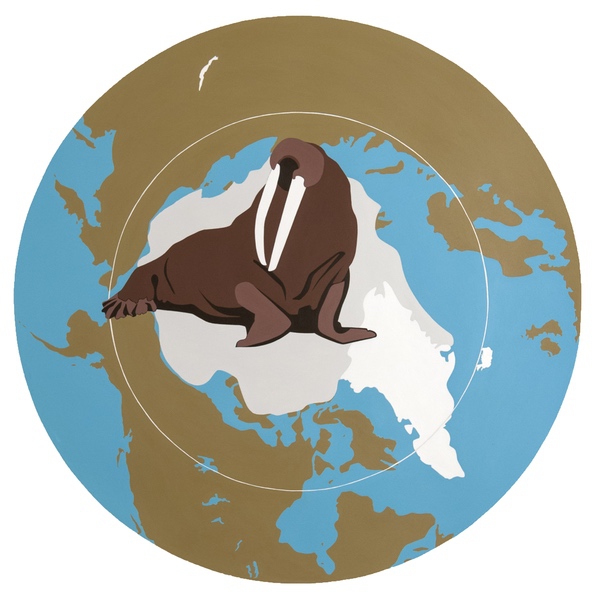
![]()
Resting on Ice, Resting on Land
The Walrus and the Arctic Circle
The sea ice that walruses rest on is disappearing, forcing them to come all the way to shore between feedings. The walrus relies on this ice while giving birth and aggregating in the reproductive period. Thinner pack ice over the Bering Sea has reduced the amount of resting habitat near optimal feeding grounds. Reduced coastal sea ice has also increased the stampeding and crowding on the shorelines of the Chukchi Sea between eastern Russia and western Alaska.
Females give birth on sea ice and use the ice as a diving platform to reach snails, clams, and worms on the shallow continental shelf. Unlike seals, walruses cannot swim indefinitely and must rest. They use their large ivory tusks to “haul out” or pull themselves onto ice. Sea ice has receded northward beyond shallow continental shelf waters and into Arctic Ocean water, where depths exceed three kilometres. The walrus cannot dive to the bottom.
The walrus does not have good eyesight, they use their highly sensitive whiskers and good hearing to locate prey. They hunt with their noses nearly touching the sea floor, eating a diverse group of marine organisms.
Walruses play an important role in the Arctic ecosystem by influencing the structure of benthic invertebrate communities. They can eat more than 50 clams, their favorite food, during a single 7-minute dive to the seafloor. As walruses root along the seafloor in search of food, they plow through large quantities of sediment, mixing bottom sediments while foraging, creating new microhabitats from discarded shells and generating food for sea floor scavengers from uneaten scraps of prey.
When the sea ice recedes over the deep ocean basin, walruses must either continue to haul out on the sea ice with little access to food, or abandon the sea ice and move to coastal areas where they can rest on land.